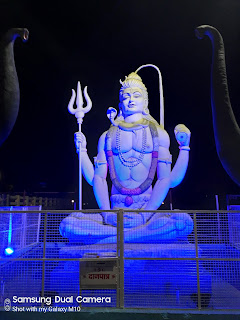The Ancient Indian War Chariot
In October 2019, an article was published in Open magazine by Nanditha Krishna a historian at CPR Institute of Indological Research in Chennai. She claimed that she got knowledge about an ancient clay tablet from Nepal through an email from her friend. Her friend Jeremy Pine is a terracotta dealer in Hong Kong and brought that tablet from Nepal.
Image courtesy: Open magazine
The thermoluminescene test of this tablet was done by Oxford Authentication on 14th May 2019 and dated the firing of the tablet between 1600 BC- 300BC.
Now we focus some important signs of this tablet:-
- The hairstyle or headdress that resembles that of Indus valley civilization.
- Chariot is being pulled by four Horses.
- The spoked wheels of the chariot.
- Absence of any Indus language sign
The ancient Indian chariots-
The chariots were important means of warfare in ancient India. The importance of chariots lay in the fact that they had mobility and could carry soldiers who could shoot while moving through the length and breadth of the battlefield.
According to Rigveda, chariots were important warfare means during the time of Aryans. No picture, tool, seal or toy depicted the sign of chariot was excavated from Harappan civilization sites, except the Sanauli chariot from Baghpat district of Uttar Pradesh. The Sanauli copper war chariot was excavated by Dr. Sanjay Kumar Manjul director ASI's Institute of Archaeology and dated it to 18th- 20th century BC. So we can conclude that the chariot was part of Indian warfare since late Harappan period.
The Indus Valley civilization hairstyle or headdress-
In India, the headgear was an important piece of clothing since Harappan times. The typical Harappan headgears are having two bull horns, Pipal leaf motif, fan shaped headgear, tiara headdress, mother goddess headgear etc. The headgear worn by both the warrior on this tablet looks like bull horn or mother goddess type.
The Horse in ancient India-
Horse (Ashwa) is one of the significant animals since Rigvedic times. The use of horses in Indus valley civilization is controversial, however some of the excavated findings prove its presence. For example, in Lothal a terracotta figure and molar tooth of horse dated to 22th century BC. In Surkodata (24th-17th century BC) horse remains were identified by A. K. Sharma and confirmed by horse specialist Sandor Bokonyi. An alleged clay model of horse was also found in Mohenjo-daro. The hoofs of horse are also found near a cattle pen in Mahagara near Prayagraj, Uttar Pradesh. Experts dated it to 3rd - 2nd millennium BCE.
The spoked wheels-
Spoked wheels are first described in Rigveda and those are uniquely related to Vedic culture, however famous Indian archeologist Dr. B. B. Lal claimed the presence of spoked wheel during Indus valley civilization, on the basis of presence of terracotta wheel painted lines on some seals excavated in Bhirrana and Rakhigarhi in Haryana, India. The presence of spoked wheels were also described by Dr. S. R. Rao in Lothal.
Absence of Indus language signs-
Lack of Indus signs reduces its possibility of being Harappan origin, but we know that Indus script is dramatically reduced during late Harappan period.
Conclusion-
From the above description, we may conclude that the above terracotta plate describes the warriors of late Harappan period on Vedic age chariot.
Presence of Harappan civilization sign as well as Vedic age signs on this tablet indicate the presence of both civilizations at the same time around 15th century BC. This finding may indicate that some people among the Harappan civilization might call themselves ARYANS (indigenous Aryans).











Please subscribe me and share your valuable opinions
ReplyDeleteThanks for sharing such informative Blog. Direct Cremation Visit our site.
ReplyDelete